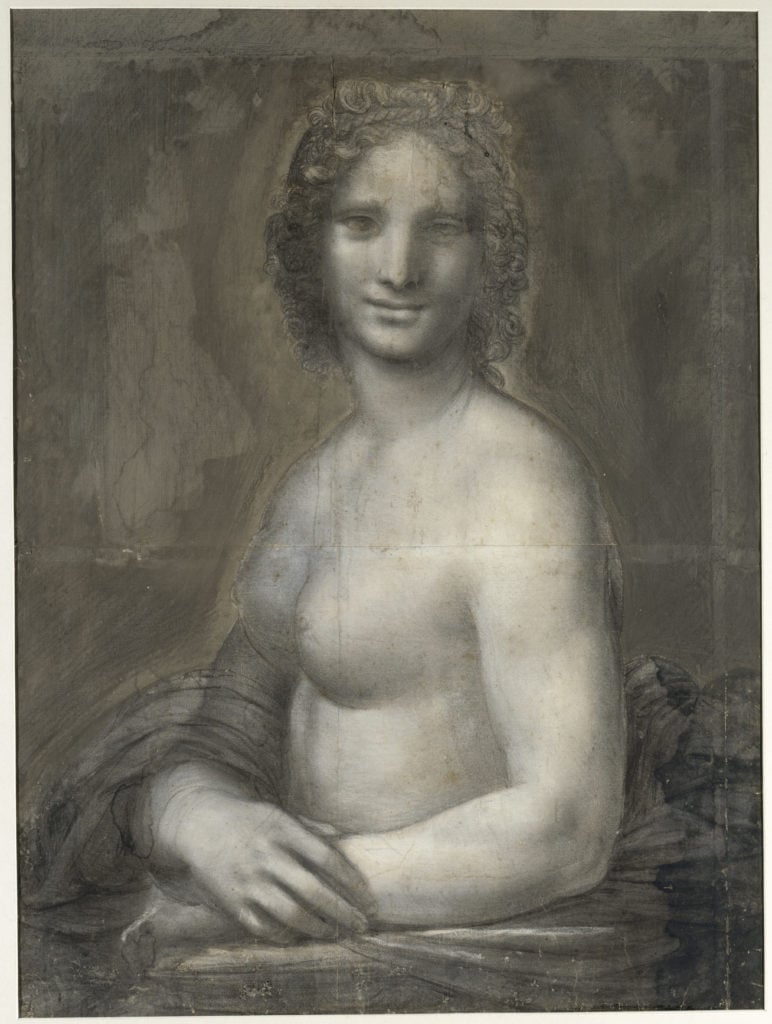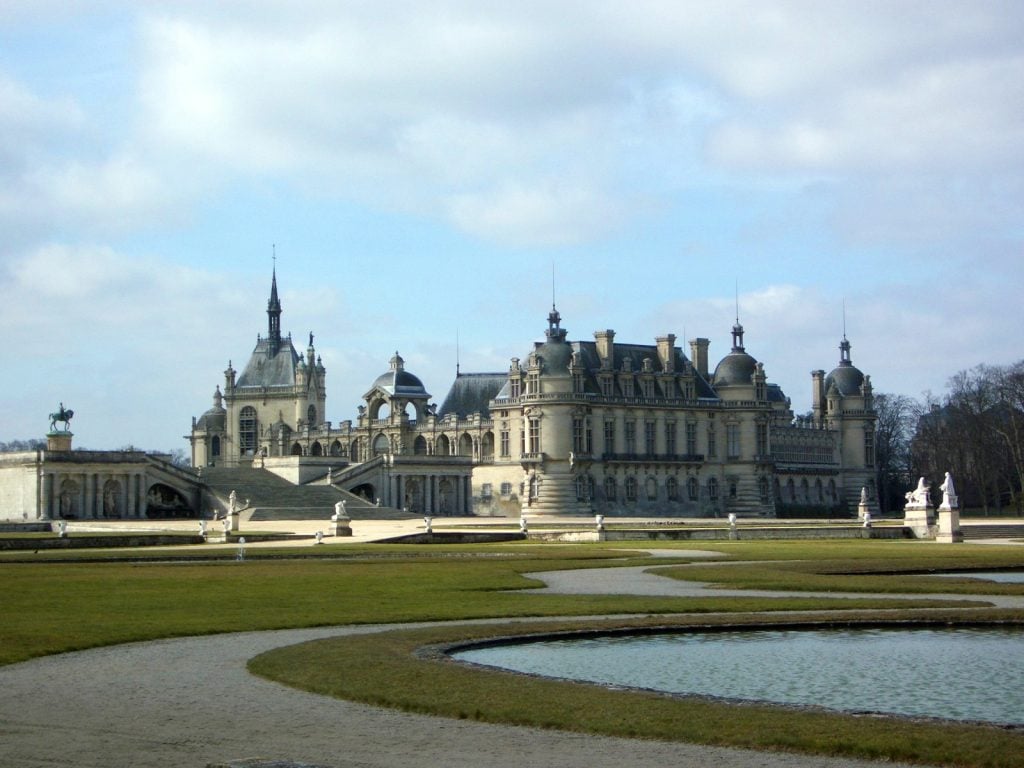Art World
Could This Nude Mona Lisa Really Be by Leonardo da Vinci? The Louvre Says Yes
The discovery might alter the course of Leonardo scholarship.

The discovery might alter the course of Leonardo scholarship.

Henri Neuendorf

Experts at the Louvre in Paris are investigating whether a charcoal sketch of a nude figure that resembles the Mona Lisa may in fact be the work of Leonardo da Vinci. The drawing, known as the Mona Vanna, had previously been attributed to Leonardo’s studio.
The large drawing has been part of the collection of the Musée Condé du Domaine de Chantilly, on the northern outskirts of Paris, since 1862. The revelation about its authorship is the result of research initiated by the Louvre ahead of a celebratory exhibition marking the 500th anniversary of the artist’s death, which is scheduled to open in June 2019 in Paris and Chantilly.
After several weeks of scientific testing, researchers now believe the work may indeed have been partly executed by Leonardo himself. Mathieu Deldicque, a curator at the Musée Condé, told Artnet News that researchers suspect the work is a preparatory sketch for a nude oil painting that no longer exists. (The discovery was first reported by the Times London.)
If researchers are able to definitively attribute the drawing to Leonardo, it would be a groundbreaking discovery that would help art historians better understand both the artist and the period in which he worked, the curator says.

Leonardo da Vinci (school of) Mona Vanna. Photo: courtesy of Musée Condé, Chantilly.
“Why [did he paint] a nude Mona Lisa or a nude female?” Deldicque asked. “Is it erotic? Is it a portrait, a portrait of divinity? Is it an allegory of fertility, or love? Or beauty or vanity? There are a lot of possible meanings and a lot of influences and [each has] lots of meanings and connotations.”
The drawing, Deldicque says, bears a number of hallmarks of Leonardo. The face, hands, and shadows are drawn using the sfumato technique, a method of very fine, almost imperceptible gradation that was favored by the Renaissance master. Deldicque emphasized that the hand positioning is also characteristic of Leonardo.
“With the new imagery and new technology we were able to see the high quality of the drawing, especially in the face and the arms,” he added. “And something very interesting is the position of the arms of the Mona Vanna, because it’s very close to the Mona Lisa at the Louvre.”

Musée Condé du Domaine de Chantilly. Photo by Craig Patik, public domain.
A technical analysis also confirmed that the drawing’s paper was manufactured in northern Italy, somewhere between present-day Venice and Florence, during Leonardo’s lifetime.
Still, other clues indicate that at least part of the drawing was executed by another artist. Researchers concluded that the hatchings around the face were drawn by a right-handed person, which suggests that the composition was filled out by someone else, likely a student or assistant. (Leonardo was left-handed.)
There will be more to investigate before experts can come to a final conclusion. “We’re just wondering if the hand of Leonardo da Vinci is present in the drawing,” Deldicque said. “It could be, but we have no clear proof of that yet.”